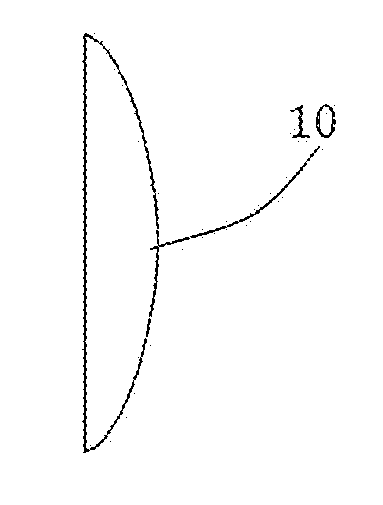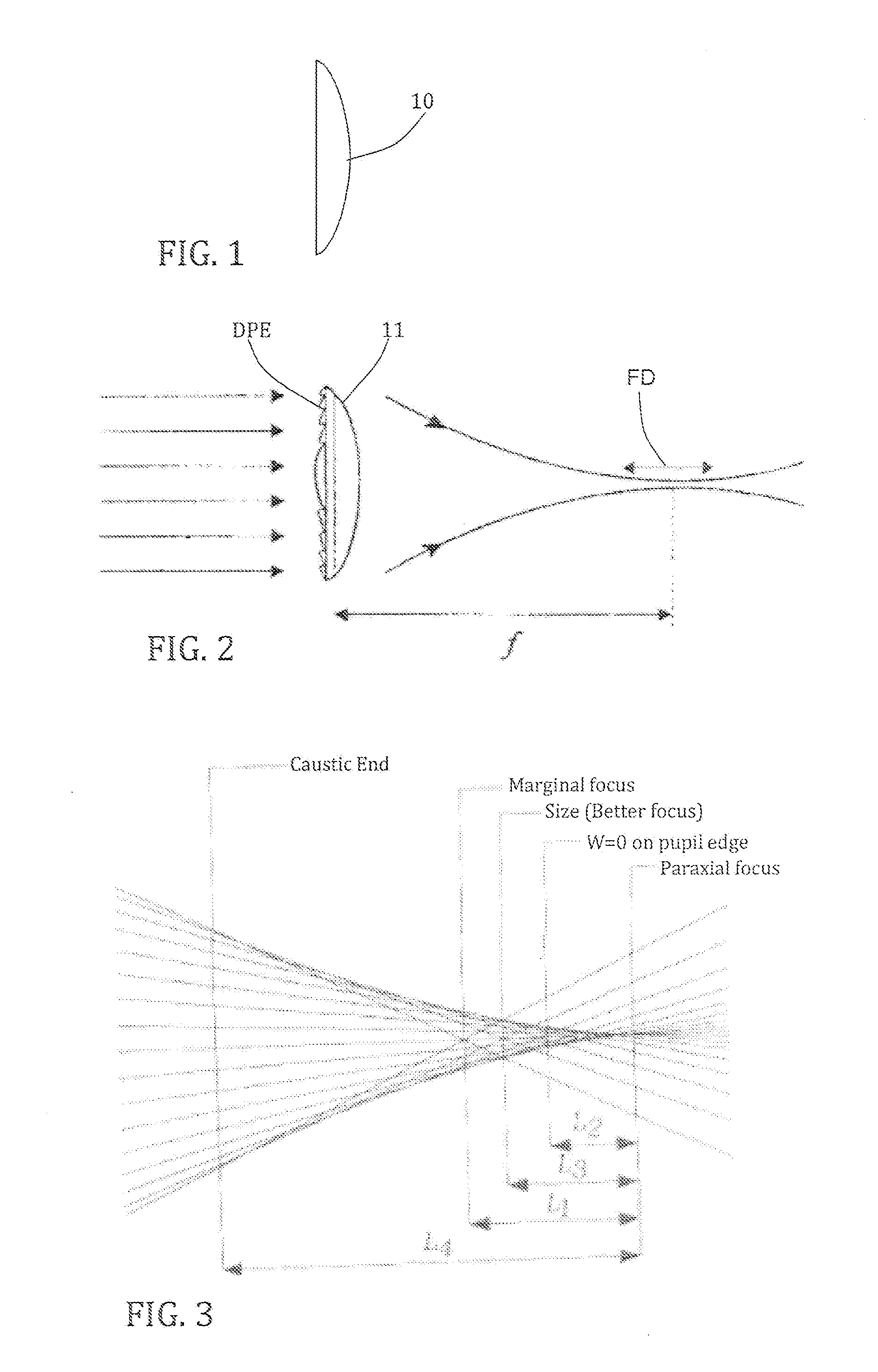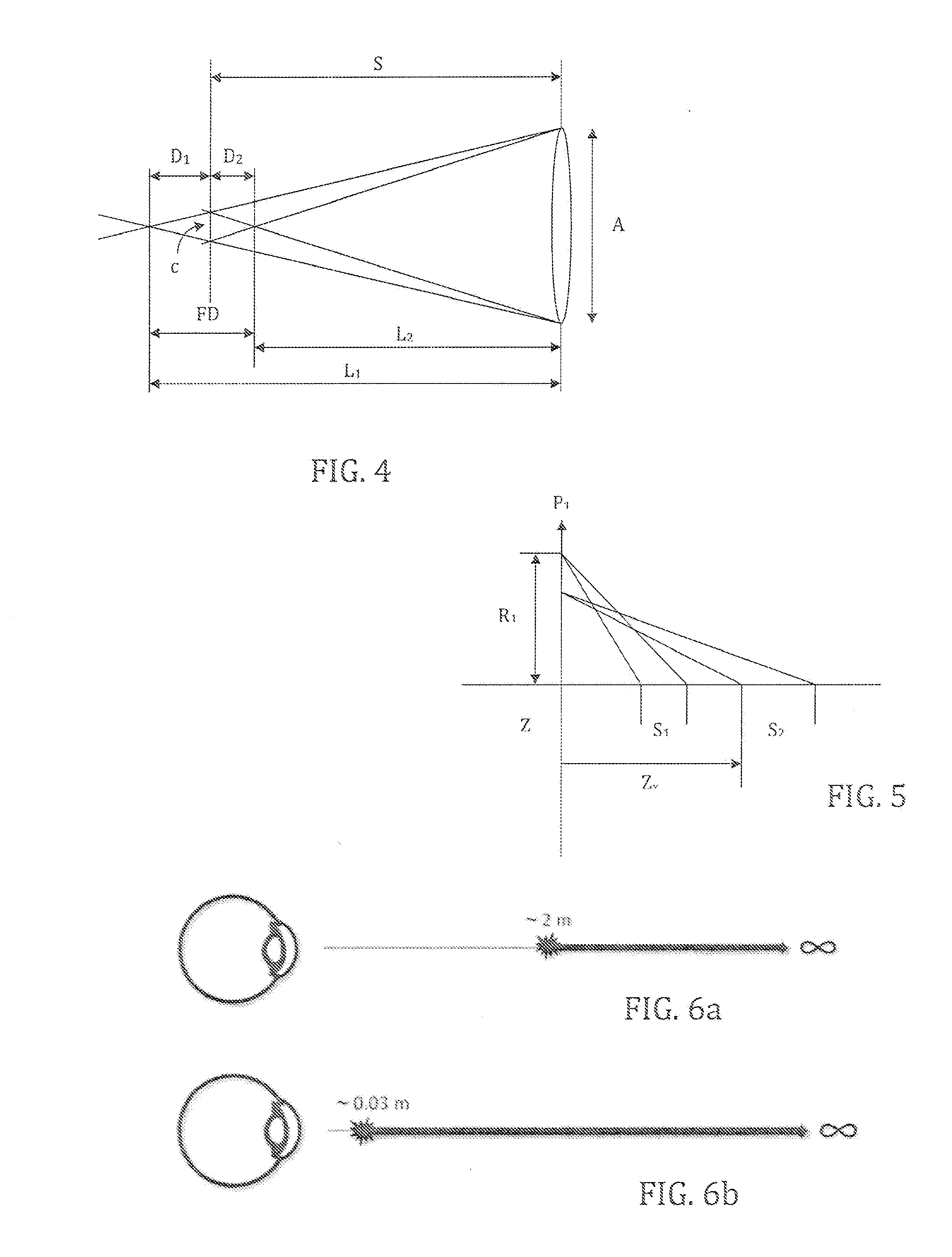Method for determining the configuration of an ophthalmic lens, ophthalmic lens produced according to said method, and method for producing said lens
- Summary
- Abstract
- Description
- Claims
- Application Information
AI Technical Summary
Benefits of technology
Problems solved by technology
Method used
Image
Examples
Embodiment Construction
[0068]A particular embodiment of the invention is described with reference to the attached figures. This example is based on an intraocular ophthalmic lens IOL (Intraocular lens). It should be noted however that the methods of the invention are also applied to all types of ophthalmic lens such as those mentioned above.
[0069]The determination method for the configuration of a lens as described in the present application can be split into three steps. One of these steps comprises the determination of the shape of a base optical corrective element 10 based on parameters such as the desired final power of the ophthalmic lens, the correction or not of the lens aberrations or of the cornea of the user, such as spherical aberrations, chromatic aberrations or high order aberrations, etc. This base optical corrective element can have a flat, convex, concave, aspheric and / or toric surface.
[0070]The resulting lens can have a positive, negative or null power; it can also be multifocal or partic...
PUM
 Login to View More
Login to View More Abstract
Description
Claims
Application Information
 Login to View More
Login to View More - R&D
- Intellectual Property
- Life Sciences
- Materials
- Tech Scout
- Unparalleled Data Quality
- Higher Quality Content
- 60% Fewer Hallucinations
Browse by: Latest US Patents, China's latest patents, Technical Efficacy Thesaurus, Application Domain, Technology Topic, Popular Technical Reports.
© 2025 PatSnap. All rights reserved.Legal|Privacy policy|Modern Slavery Act Transparency Statement|Sitemap|About US| Contact US: help@patsnap.com



